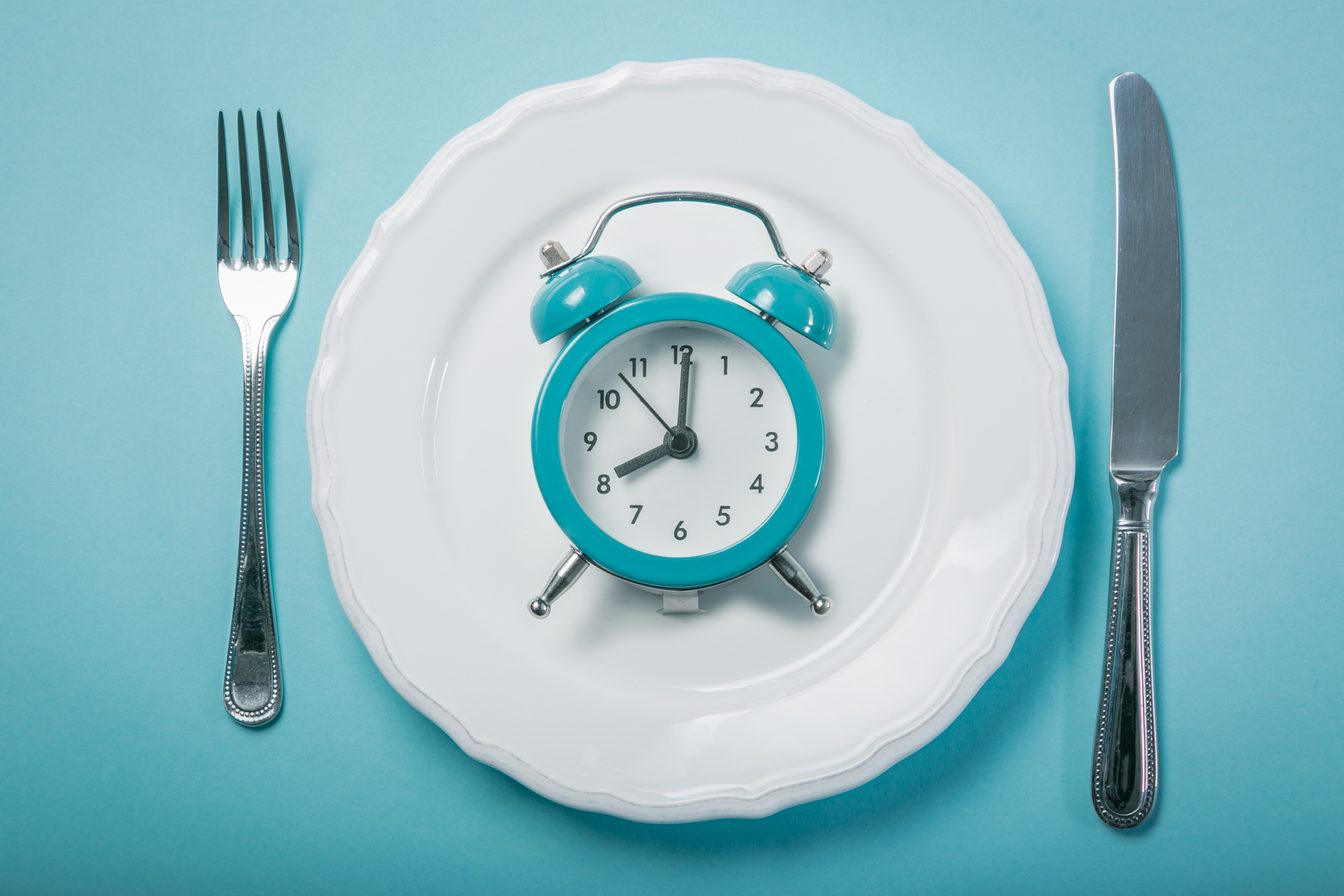Ketogenic Diet: Is the ultimate low-carb diet good for you?

Recently, many of my patients have been asking about a ketogenic diet. Is a ketogenic diet safe? Would you recommend it? Despite the recent hype, a ketogenic diet is not something new. In medicine, we have been using it for almost 100 years to treat drug-resistant epilepsy, especially in children. In the 1970s, Dr. Atkins popularized his very-low-carbohydrate diet for weight loss that began with a very strict two-week ketogenic phase. Over the years, other fad diets incorporated a similar approach for weight loss.
What is a ketogenic (keto) diet?
In essence, it is a diet that causes the body to release ketones into the bloodstream. Most cells prefer to use blood sugar, which comes from carbohydrates, as the body’s main source of energy. In the absence of circulating blood sugar from food, we start breaking down stored fat into molecules called ketone bodies (the process is called ketosis). Once you reach ketosis, most cells will use ketone bodies to generate energy until we start eating carbohydrates again. The shift, from using circulating glucose to breaking down stored fat as a source of energy, usually happens over two to four days of eating fewer than 20 to 50 grams of carbohydrates per day. Keep in mind that this is a highly individualized process, and some people need a more restricted diet to start producing enough ketones.
Because it lacks carbohydrates, a ketogenic diet is rich in proteins and fats. It typically includes plenty of meats, eggs, processed meats, sausages, cheeses, fish, nuts, butter, oils, seeds, and fibrous vegetables. Because it is so restrictive, it is really hard to follow over the long run. Carbohydrates normally account for at least 50% of the typical American diet. One of the main criticisms of this diet is that many people tend to eat too much protein and poor-quality fats from processed foods, with very few fruits and vegetables. Patients with kidney disease need to be cautious because this diet could worsen their condition. Additionally, some patients may feel a little tired in the beginning, while some may have bad breath, nausea, vomiting, constipation, and sleep problems.
Is a ketogenic diet healthy?
We have solid evidence showing that a ketogenic diet reduces seizures in children, sometimes as effectively as medication. Because of these neuroprotective effects, questions have been raised about the possible benefits for other brain disorders such as Parkinson’s, Alzheimer’s, multiple sclerosis, sleep disorders, autism, and even brain cancer. However, there are no human studies to support recommending ketosis to treat these conditions.
Weight loss is the primary reason my patients use the ketogenic diet. Previous research shows good evidence of a faster weight loss when patients go on a ketogenic or very low carbohydrate diet compared to participants on a more traditional low-fat diet, or even a Mediterranean diet. However, that difference in weight loss seems to disappear over time.
A ketogenic diet also has been shown to improve blood sugar control for patients with type 2 diabetes, at least in the short term. There is even more controversy when we consider the effect on cholesterol levels. A few studies show some patients have increase in cholesterol levels in the beginning, only to see cholesterol fall a few months later. However, there is no long-term research analyzing its effects over time on diabetes and high cholesterol.
Key takeaways from a ketogenic diet review?
A ketogenic diet could be an interesting alternative to treat certain conditions, and may accelerate weight loss. But it is hard to follow and it can be heavy on red meat and other fatty, processed, and salty foods that are notoriously unhealthy. We also do not know much about its long-term effects, probably because it’s so hard to stick with that people can’t eat this way for a long time. It is also important to remember that “yo-yo diets” that lead to rapid weight loss fluctuation are associated with increased mortality. Instead of engaging in the next popular diet that would last only a few weeks to months (for most people that includes a ketogenic diet), try to embrace change that is sustainable over the long term. A balanced, unprocessed diet, rich in very colorful fruits and vegetables, lean meats, fish, whole grains, nuts, seeds, olive oil, and lots of water seems to have the best evidence for a long, healthier, vibrant life.
www.health.harvard.edu/blog/ketogenic-diet-is-the-ultimate-low-carb-diet-good-for-you-2017072712089
Food Safety Charts
Food Safety Charts
With Thanksgiving right around the corner, it may be helpful to check the charts available on the links below.
The keys to basic food safety are cooking it to the right temperature and storing it properly.
Foods are properly cooked when they are heated for a long enough time and at a high enough temperature to kill the harmful bacteria that cause foodborne illness. Properly storing foods preserves food quality and prevents both spoilage and food poisoning. Consult the easy-to-read charts below to learn how to cook and store your food the right way.
- Safe Minimum Cooking Temperatures: Cook all food to these minimum internal temperatures as measured with a food thermometer for safety.
- Cold Food Storage Chart: Storage guidelines for home-refrigerated foods to keep them from spoiling or becoming dangerous to eat.
- Meat and Poultry Charts: Use these timetables to determine how long to cook meat & poultry products. Times are approximate.
- Food Safety in a Disaster or Emergency: How to keep food safe during and after an emergency, such as a flood, fire, national disaster, or the loss of power.
www.foodsafety.gov/food-safety-charts
Intermittent Fasting – A Surprising Update

There’s a ton of incredibly promising intermittent fasting (IF) research done on fat rats. They lose weight, their blood pressure, cholesterol, and blood sugars improve… but they’re rats. Studies in humans, almost across the board, have shown that IF is safe and incredibly effective, but really no more effective than any other diet. In addition, many people find it difficult to fast.
But a growing body of research suggests that the timing of the fast is key, and can make IF a more realistic, sustainable, and effective approach for weight loss, as well as for diabetes prevention.
The backstory on intermittent fasting
IF as a weight loss approach has been around in various forms for ages, but was highly popularized in 2012 by BBC broadcast journalist Dr. Michael Mosley’s TV documentary Eat Fast, Live Longer and book The Fast Diet, followed by journalist Kate Harrison’s book The 5:2 Diet based on her own experience, and subsequently by Dr. Jason Fung’s 2016 bestseller The Obesity Code. IF generated a steady positive buzz as anecdotes of its effectiveness proliferated.
As a lifestyle-leaning research doctor, I needed to understand the science. The Obesity Codeseemed the most evidence-based summary resource, and I loved it. Fung successfully combines plenty of research, his clinical experience, and sensible nutrition advice, and also addresses the socioeconomic forces conspiring to make us fat. He is very clear that we should eat more fruits and veggies, fiber, healthy protein, and fats, and avoid sugar, refined grains, processed foods, and for God’s sake, stop snacking. Check, check, check, I agree. The only part that was still questionable in my mind was the intermittent fasting part.
Intermittent fasting can help weight loss
IF makes intuitive sense. The food we eat is broken down by enzymes in our gut and eventually ends up as molecules in our bloodstream. Carbohydrates, particularly sugars and refined grains (think white flours and rice), are quickly broken down into sugar, which our cells use for energy. If our cells don’t use it all, we store it in our fat cells as, well, fat. But sugar can only enter our cells with insulin, a hormone made in the pancreas. Insulin brings sugar into the fat cells and keeps it there.
Between meals, as long as we don’t snack, our insulin levels will go down and our fat cells can then release their stored sugar, to be used as energy. We lose weight if we let our insulin levels go down. The entire idea of IF is to allow the insulin levels to go down far enough and for long enough that we burn off our fat.
Intermittent fasting can be hard… but maybe it doesn’t have to be
Initial human studies that compared fasting every other day to eating less every day showed that both worked about equally for weight loss, though people struggled with the fasting days. So I had written off IF as no better or worse than simply eating less, only far more uncomfortable. My advice was to just stick with the sensible, plant-based, Mediterranean-style diet.
New research is suggesting that not all IF approaches are the same, and some are actually very reasonable, effective, and sustainable, especially when combined with a nutritious plant-based diet. So I’m prepared to take my lumps on this one (and even revise my prior post).
We have evolved to be in sync with the day/night cycle, i.e., a circadian rhythm. Our metabolism has adapted to daytime food, nighttime sleep. Nighttime eating is well associated with a higher risk of obesity, as well as diabetes.
Based on this, researchers from the University of Alabama conducted a study with a small group of obese men with prediabetes. They compared a form of intermittent fasting called “early time-restricted feeding,” where all meals were fit into an early eight-hour period of the day (7 am to 3 pm), or spread out over 12 hours (between 7 am and 7 pm). Both groups maintained their weight (did not gain or lose) but after five weeks, the eight-hours group had dramatically lower insulin levels and significantly improved insulin sensitivity, as well as significantly lower blood pressure. The best part? The eight-hours group also had significantly decreased appetite. They weren’t starving.
Just changing the timing of meals, by eating earlier in the day and extending the overnight fast, significantly benefited metabolism even in people who didn’t lose a single pound.
So is this as good as it sounds?
I was very curious about this, so I asked the opinion of metabolic expert Dr. Deborah Wexler, Director of the Massachusetts General Hospital Diabetes Center and associate professor at Harvard Medical School. Here is what she told me. “There is evidence to suggest that the circadian rhythm fasting approach, where meals are restricted to an eight to 10-hour period of the daytime, is effective,” she confirmed, though generally she recommends that people “use an eating approach that works for them and is sustainable to them.”
So here’s the deal. There is some good scientific evidence suggesting that circadian rhythm fasting, when combined with a healthy diet and lifestyle, can be a particularly effective approach to weight loss, especially for people at risk for diabetes. (However, people with advanced diabetes or who are on medications for diabetes, people with a history of eating disorders like anorexia and bulimia, and pregnant or breastfeeding women should not attempt intermittent fasting unless under the close supervision of a physician who can monitor them.)
4 ways to use this information for better health
- Avoid sugars and refined grains. Instead, eat fruits, vegetables, beans, lentils, whole grains, lean proteins, and healthy fats (a sensible, plant-based, Mediterranean-style diet).
- Let your body burn fat between meals. Don’t snack. Be active throughout your day. Build muscle tone.
- Consider a simple form of intermittent fasting. Limit the hours of the day when you eat, and for best effect, make it earlier in the day (between 7 am to 3 pm, or even 10 am to 6 pm, but definitely not in the evening before bed).
- Avoid snacking or eating at nighttime, all the time.
www.health.harvard.edu/blog/intermittent-fasting-surprising-update-2018062914156
Spend a Moment With a Moose
Enjoy a few moments with a moose to soothe and relax you!
Free Concert Schedule – Indianapolis Artsgarden

The Indianapolis Artsgarden, part of the Circle Center Mall downtown hosts multiple free concerts every month. There is parking available in garages attached to the mall. Upcoming November weekend concerts include:
- Saturday 11/9 1 PM Zionsville Concert Band
- Sunday, 11/10 2 PM Starlighters Big Band
- Saturday, 11/16 Indy Pride Jazz Band
Free Indy Runners Participation
Free Membership to IndyRunners for Butler Employees
Who are Indy Runners?
Over 700 runners, walkers, biathletes and tri-athletes of differing age, ability and background participate throughout the year in club sponsored events and activities.
Please contact us at healthyhorizons@butler.edu for a discount code for $35 off. We will provide a free individual membership or reduce a family membership by $35.
Further information on Indy Runners membership is found at www.indyrunners.org/view-content.aspx?sectionID=2.
Creating Mindful Eating
8 steps to mindful eating

1. Begin with your shopping list. Consider the health value of every item you add to your list and stick to it to avoid impulse buying when you’re shopping. Fill most of your cart in the produce section and avoid the center aisles—which are heavy with processed foods—and the chips and candy at the check-out counter.
2. Come to the table with an appetite— but not when ravenously hungry. If you skip meals, you may be so eager to get anything in your stomach that your first priority is filling the void instead of enjoying your food.
3. Start with a small portion. It may be helpful to limit the size of your plate to nine inches or less.
4. Appreciate your food. Pause for a minute or two before you begin eating to contemplate everything and everyone it took to bring the meal to your table. Silently express your gratitude for the opportunity to enjoy delicious food and the companions you’re enjoying it with.
5. Bring all your senses to the meal. When you’re cooking, serving, and eating your food, be attentive to color, texture, aroma, and even the sounds different foods make as you prepare them. As you chew your food, try identifying all the ingredients, especially seasonings.
6. Take small bites. It’s easier to taste food completely when your mouth isn’t full. Put down your utensil between bites.
7. Chew thoroughly. Chew well until you can taste the essence of the food. (You may have to chew each mouthful 20 to 40 times, depending on the food.) You may be surprised at all the flavors that are released.
8. Eat slowly. If you follow the advice above, you won’t bolt your food down. Devote at least five minutes to mindful eating before you chat with your tablemates.
www.health.harvard.edu/staying-healthy/8-steps-to-mindful-eating
Helpful Neck Stretches
Video: Neck stretches for the workplace
For a great work-at-desk stretch, see the video below:
www.mayoclinic.org/healthy-lifestyle/adult-health/multimedia/neck-stretches/vid-20084697

Spirit & Place Festival: Super Universal Shape Shifters
| When and Where: Saturday, November 2, 2019 10:00 AM – 1:00 PM at Ivy Tech Community College IFC Illinois Fall Creek Center, 2535 N. Capitol Ave., Indianapolis, IN 46208  Special Venue Instructions: Free parking available.
Event Description:Join us for a come-and-go, family-friendly community event that will stoke positive energy in the universe! Bring your love of music and dance to create sacred symbols of the universe. Recognition of universal shapes and other forms of sacred geometry, such as the mandala, can have an effect on how we view ourselves in relation to others and the universe. Shapes describe an important part of what we are – and connected elements evolving from and revolving around a unifying center. This free-flowing event invites participants to dance, create art, listen to poetry, and celebrate their special place in the universe! Campus parking, this is free. Enter doors 1 or 2 to building off of 26th & Illinois Streets or off of 26th St. and Capitol Ave. Walk-ins welcome. Presented by Ivy Tech Community College—Indianapolis, Ivy Tech Student Government Association, and Dances of Universal Peace Indianapolis. Image Credit: Hand Mandala, Tina Gutierrez www.spiritandplace.org/Festival.aspx?access=Details&Year=2019&EventScheduleID=27 |

